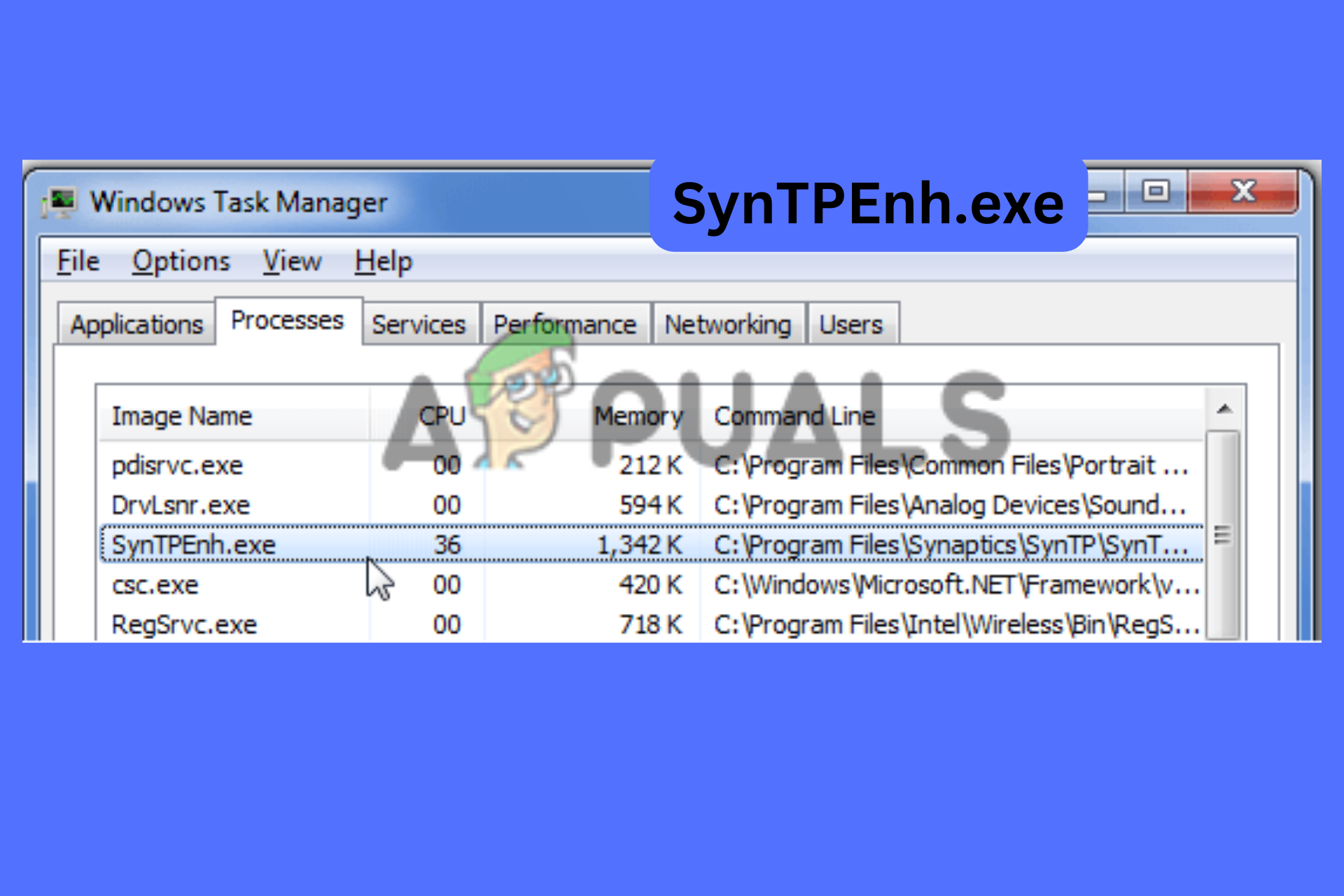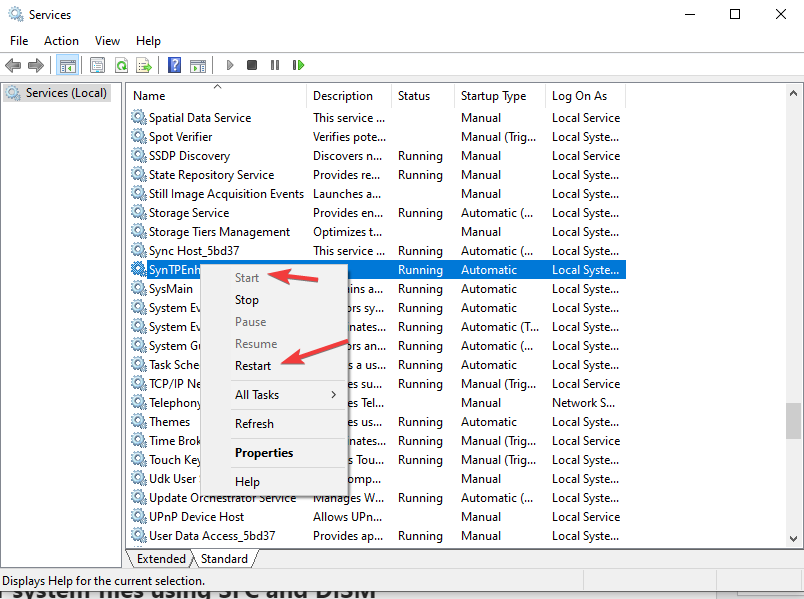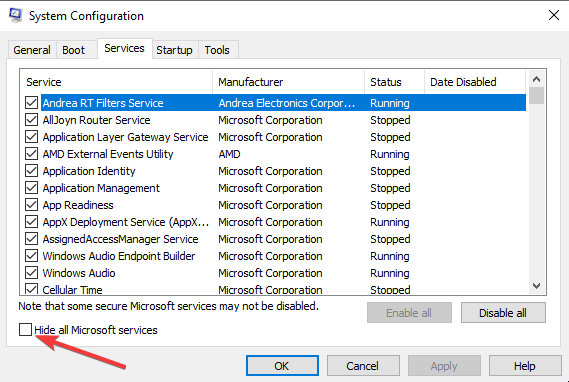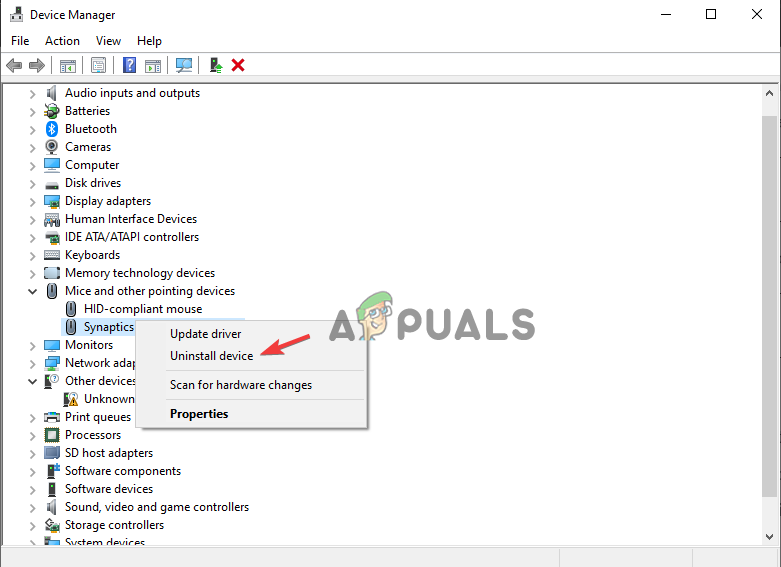SynTPEnh.exe: What is it & How to Fix It’s Application Error?
SynTPEnh.exe is genuine file for Synaptics TouchPad
SynTPEnh.exe (Synaptics TouchPad Enhancements) is a legitimate process for Synaptics Touchpad that provides additional features, support, and configurations to laptops and computers that use Touchpads, exclusively for those that use IBM Touchpad. The SynTPEnh.exe is located at C:\Program Files\Synaptics\SynTP.

The file has the .exe extension meaning it’s executable, and it has machine code. Simply put, when you open the Synaptics Touchpad, your PC executes the commands stored in the SynTPEnh.exe file. The file is processed in the RAM as a Synaptics touchpad tray icon task.
Is SynTPEnh.exe safe, and should I uninstall it?
The SynTPEnh.exe is considered a safe and genuine process, and it cannot cause any harm to your computer. However, like any other executable file, it can be infected with a virus or a virus disguised itself as SynTPEnh.exe.
The decision to until this file depends on two major factors; if the file is causing errors on your PC or if you no longer want or use the synaptic touchpad on your computer. The file is not system data, so it cannot affect any other functions in your system. However, it is recommended to keep the process running if it is genuine and causing no issues to your computer.
What is SynTPEnh.exe application error?
The SynTPEnh.exe application error occurs when a user is using, or updating Windows or software on their computers. The error is caused by an outdated or missing Synaptic driver, broken system files, or, in rare cases, virus infection.
When this error occurs in your system, you will have limitations on how you use the touchpad, your system might freeze or become sluggish, you might not be able to complete some updates and sometimes, your apps might crash.
The error message is as follows:
SynTPEnh.exe – Application Error
The instruction at Ox0000000140035964 referenced memory at Ox0000000000000010. The memory could not be read.
Click on OK to terminate the program.
Click on CANCEL to debug the program
How Do I Fix the SynTPEnh.exe application error?
If you get the SynTPEnh.exe application error when updating Windows, apps or when you are working on your computer normally, restart your computer and reinstall the app causing the error. If that doesn’t work, try the following solutions.
- Ensure the SynTPEnh.exe is running in the Services console. The issue could be caused by the service not running. It might have automatically stopped or something else caused the scenario. To fix it, you need to restart the service or check if it’s still running.
- Repair system files using SFC and DISM. Missing, or corrupted system files can cause a lot of issues to your computer including SynTPEnh.exe application errors. The best way to fix these files is by repairing them using the SFC and DISM tools. We will look at these steps shortly.
- Troubleshoot in Clean Boot. When you clean boot your computer, you ensure that no non-Microsoft apps are running in the background. Here, you can manually enable the services, and narrow them down to the services conflicting with SynTPEnh.exe.
- Re-register SynTPEnh.exe. If the issue happens because the app is not registered properly, you can re-register it to ensure it is working properly. You can re-register the app using Windows Command Prompt.
- Update the Synaptics driver. The driver can be corrupted, missing, or outdated, causing the SynTPEnh.exe application error. Updating the driver will fix all these issues at once and you won’t get the error on your computer.
- Reinstall the Synaptics driver. Sometimes, the driver installation might be incomplete or faulty, even with the latest one onboard. Removing it and installing it again can go a long way in fixing the issue.
1. Ensure the SynTPEnh.exe is running in the Services console.
- Press the Windows button + R, type services.msc in the Run dialog, and hit Enter.
- Locate the SynTPEnh service and right-click it.
- Select Start if the service is not running.
- If the service is running, you can select Restart.

Ensure the SynTPEnh.exe is running - Reboot your computer and check if the error is fixed.
2. Repair system files using SFC and DISM
- Search for Command Prompt in the search box and select Run as administrator.
- Next, type the following command and hit Enter:
Sfc /scannow
- Once the scan is complete to 100% or if the SFC scan returns an error, type the following commands, each at a time and press Enter on the keyboard;
DISM /Online /Cleanup-Image /CheckHealth
DISM /Online /Cleanup-Image /ScanHealth
DISM /Online /Cleanup-Image /RestoreHealth
3. Troubleshoot in Clean Boot
- Type msconfig in the search box and choose System Configuration in the results list.
- Go to the Services tab and click the box next to Hide all Microsoft services. Next, click Disable all and select Apply.

Troubleshoot in Clean Boot - Click on the Startup tab and select Open Task Manager.
- Click on every enabled item, and select Disable on the bottom right side of the window. Note all the items you have disabled and exit Task Manager.
- Go back to the Startup tab and click OK.
- Restart your PC and it will be on the Clean Boot environment.
Now, you can either reinstall the program or run other troubleshooting methods.
4. Re-register SynTPEnh.exe
- Open Command Prompt as an administrator.
- Copy and paste the following command and press Enter;
regsvr32 /u syntpenh.exe
- Once the process is complete, copy and paste the following command and hit Enter:
regsvr32 /i syntpenh.exe
5. Update the Synaptics driver
- Press the Windows button + X and select Device Manager.
- Locate Mice and other pointing devices option and click to expand it.
- Look for Synaptics Pointing Device and right-click on it. Select Update driver.

Update the Synaptics driver - On the new wizard, select Search automatically for drivers.
Alternatively, you can look for Synaptics driver from the manufacturer’s website, download, and install it.
6. Reinstall the Synaptics driver
- Type Devmgmt.msc on the Run dialog box and press Enter to open Device Manager.
- Locate and click Mice and other pointing devices to expand it.
- Look for Synaptics Pointing Device, right-click on it, and select Uninstall device.
- Again, click Uninstall to confirm that you want to continue with the process.

Reinstall the Synaptics driver - Next, restart your PC, and Windows will reinstall the driver automatically.
We hope you can have a better understanding of Syntpenh.exe.
Still need more information?
We believe that you are better equipped with what the Syntpenh.exe: is, and anything surrounding it. However, if you need more information or more help to fix the error, feel free to leave a message in the comment section. One of the representatives will get back to you. Alternatively, you can contact Microsoft or your device manufacturers for more personalized help.
SynTPEnh.exe - FAQs
The legitimate SynTPEnhService is part of the Synaptic Pointing Device developed by Synaptics. The component is useful as it enables the touchpad the ability to sense and detect touch in various devices like touchscreens, laptops, etc. Without the component, you will have limitations on how you use your touchpad.
Yes, you can uninstall Synaptics Pointing Device only if it is causing issues on your computer or when you feel you and your device don’t need it, at all. Uninstalling the device will not affect the way your PC performs other tasks. However, we recommend that you keep the software if all is well.
 Reviewed by
Reviewed by 




